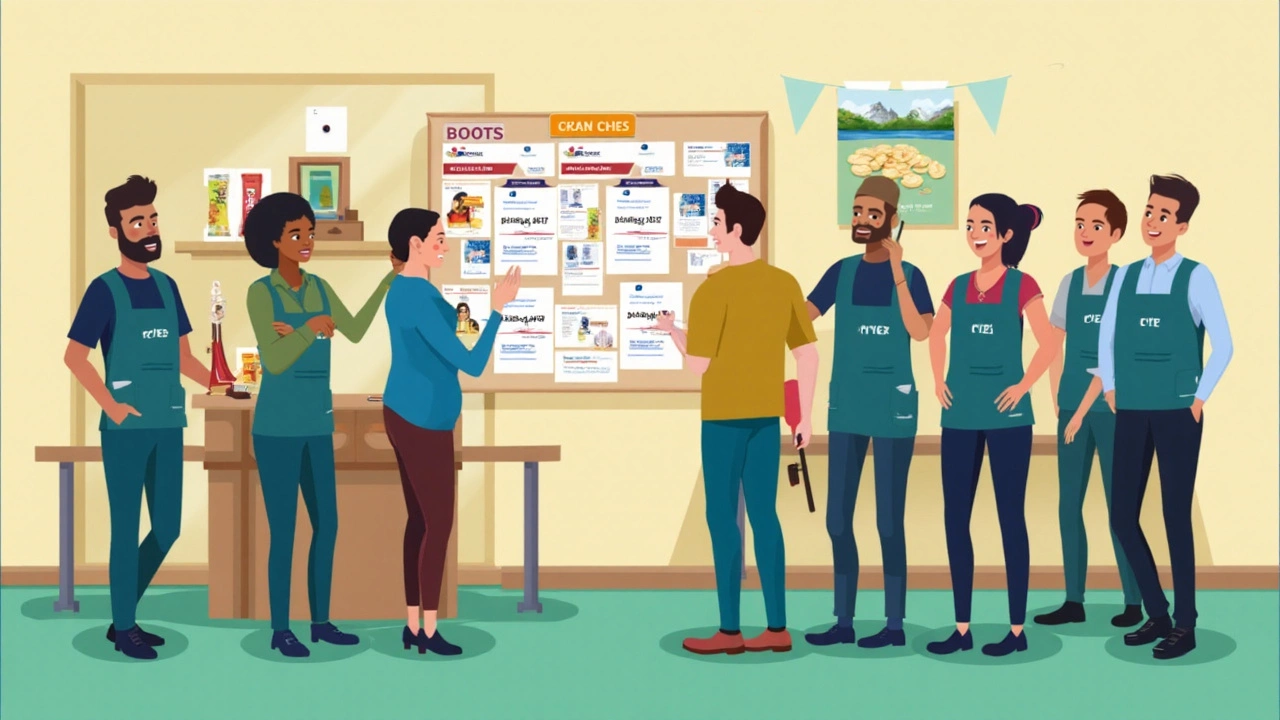When you’re working in Ireland, payslip jargon can feel like it needs its own manual. AD or EE—the codes that appear quietly on your slips—hold the key to your tax and PRSI destiny. But unless you’ve spent hours over Revenue.ie guides or cornered your HR team for a cup of explanation, figuring out what these mean gets confusing fast. Anyone scanning the post-lunch coffee queue at Centra will probably spot at least one person scrolling through their banking app and wondering the same thing: am I AD or EE?
What Do AD and EE Mean in Ireland?
First things first: AD stands for ‘Add’ and EE stands for ‘Employee’. That seems simple, right? But what’s actually being added, and whose employee are we on paper? In Ireland, when you see AD on your payslip, it’s most often showing an additional payment or adjustment—maybe overtime, a one-off bonus (those rare moments!), or a benefit like a travel allowance for taking Bus Éireann instead of driving the M50. EE, though, signals amounts relating to ‘employee’, as in deductions pulled from your wage for things like PAYE, USC, and PRSI. If you’re an expat, this can be even more confusing since practices in other countries (say, the UK’s ‘NI’ or the US’s W-2 lingo) use different codes entirely.
The reason these codes matter? Knowing them gives you better control over your pay, tax, and what’s taken home. If you’re considering changing jobs—maybe that software gig in Dublin’s Silicon Docks, or a summer lifeguard post down in Blackrock—being clear on which applies to you means you’ll avoid nasty surprises at tax-return time. It also helps if Revenue reaches out with a query or if you need to explain your financial status for a loan from the local credit union.
Here’s a quick breakdown: AD entries are usually up-top adjustments to your base pay—things your employer is giving you or correcting (like back pay for unsociable hours at a hospital). EE entries refer to you, the employee—that’s the cash taken away for your statutory deductions, and sometimes even your own contributions to a pension scheme, like a company-funded Irish Life plan. The taxman always gets his cut, but spotting whether a figure is AD or EE puts you back in charge.
Irish Payslips Demystified: Spotting AD vs EE
When your payslip lands in your inbox—or the post, for those holding onto the old ways—it’ll have a handful of abbreviations. Some are universal, like your gross pay and net pay, but the breakdown between AD and EE tells the real story of where your money went. For instance, you might see a line that says “PRSI (EE)”, which is your share of Pay Related Social Insurance. Look for “PRSI (ER)” too, because that’s your boss’s side of the contribution. “AD” is less common and often appears when something out of the ordinary happens, such as a payroll backdated you after the Paddy’s Day bank holiday, or if you scored a COVID-19 benefit.
If you’re working a typical nine-to-five, like at SuperValu in Galway or a call centre in Waterford, your regular payslip may only show EE codes—deductions applied directly to you, usually for PAYE, PRSI, and USC (Universal Social Charge). But if you’ve ever done a late shift and claimed extra, or your employer made a correction from a previous mistake, the AD code pops up to balance the books.
Some practical advice: set aside a few minutes each month to check these codes. If you spot discrepancies in the AD amounts (say, more overtime pay than expected, or a bonus that doesn’t match your contract), raise it with payroll—mistakes happen, especially during busy months like December or during events such as the All-Ireland finals when staff rotas move every minute. In some bigger companies, like Bank of Ireland or Google Ireland, HR self-service systems let you check your payslip breakdowns—use these portals to keep tabs.

Employment Status and How AD or EE Affect You
Here’s where things get real. Whether you’re marked as AD or EE can affect more than your bank balance—it changes what you’re eligible for and what you owe the state. For anyone coming to Ireland for work, especially in multinationals or on a student visa, it’s crucial to understand how payroll labels you. In most standard jobs, you’ll see more EE entries, unless you’re in a management or contract role where unique payments (ADs) happen more often.
If you’re self-employed—maybe running a design studio in Cork, or freelancing as a photographer for local events like Electric Picnic—you’ll get used to receiving payments in bulk, without all the EE deductions. But those codes show up big-time when you do your end-of-year self-assessment or PAYE anytime filing. Employees (EE) pay as they earn, whereas extra additions (AD) are sometimes taxed differently, depending on the employer’s system. PRSI Class A (for mainstream employees) will see EE codes for your contributions; Proprietary Directors or those in family-run businesses often see more AD codes, as benefits-in-kind (like company cars) are added in separately.
Don’t ignore the local flavour, either. Ireland’s tax year ends in December, but you can file up until October next year for self-assessments. Citizens Information and Revenue.ie both offer breakdowns and even sample payslips to help you compare your own. Plenty of GAA clubs, for example, offer summer jobs for teens, and part-time bar work is pretty much a Dublin rite of passage—so understanding your classification early helps avoid confusion later.
If you’ve moved here from abroad, be aware Irish employment rights are strong (unpaid trial work is illegal, for example), and you’re owed clear payslips with both AD and EE clearly on display if relevant. Never let an employer fob you off with excuses—if you can’t tell what you’re being paid or deducted, it’s time to ask direct questions.
Typical Mistakes Facing Irish Workers with AD and EE
Plenty of us have had that sinking feeling when numbers on a payslip don’t add up—Irish payroll isn’t immune to human error. So what goes wrong? One classic mix-up is misclassifying overtime, especially around public holidays (think St Patrick’s Day, Christmas, Easter Monday) where people get extra payments and employers might use the wrong code. Another regular hiccup comes with flexible work—if you do shift swaps at a care home or extra hours at Tesco, your employer must use the right code for top-up payments.
Misunderstood deductions trip up new workers all the time. The EE abbreviation can look like you’re being hit with endless charges, but some are voluntary—like union dues if you’re in SIPTU or a sports and social club deduction. If you don’t spot an AD bonus for bank holidays or Sunday work, you might be missing out on payments you’ve earned. Tech errors sometimes happen, especially as more firms use payroll software like Sage or BrightPay—worth double-checking after software updates.
The gig economy is a hotspot for confusion too. Delivery drivers or short-term contractors with Deliveroo or Just Eat might see more ‘AD’ payments as each gig is logged individually, and often without direct wage deductions (meaning you do the tax work yourself at year-end). If in doubt, always ask your employer for a full payslip breakdown—by law, you’re entitled to one that clearly details all payments and deductions.
One tip for avoiding confusion is to keep a payslip diary—just a notebook or even the Notes app on your phone. Jot down any overtime, bonuses promised, or deductions made each month. When annual tax time rolls around, having this record helps you challenge any inaccuracies and ensures you’re not short-changed on your Christmas bonus after a long year.

What to Do If You’re Unsure: Getting Expert Irish Help
If you’re staring at your payslip and still can’t tell if you’re AD or EE, there’s no shame in asking for help—you wouldn’t believe how many people in Ireland do! Start with your HR or payroll officer. Most Irish firms, from SME startups in Limerick to global giants in Dublin, have someone (or a whole team) who can walk you through payslip breakdowns. If you work for a smaller local business, like a cafe on Shop Street or a bar in Temple Bar, just ask your manager or the bookkeeper. It’s their job to explain your pay and deductions clearly.
Don’t forget the Irish state is on your side here—Citizens Information Centres in every county offer free, confidential advice. They’re used to handling sticky payroll situations, from carers to construction workers. Revenue.ie also has online chat, and their phone support is surprisingly friendly (by government standards). If you need it in writing, download their sample payslips—handy for comparing what’s missing or mislabelled on your own.
For students doing shifts at Penneys or working during festivals like Body & Soul, the Union of Students in Ireland (USI) provides guides to help navigate these codes, especially if you have multiple jobs. Trade unions, like Mandate or SIPTU, also step in if there’s a bigger issue with pay fairness or legal compliance.
If you ever feel your employer isn’t being straight—maybe they refuse to issue proper payslips, or you think they’re dodging PRSI—contact the Workplace Relations Commission. There are stories on RTÉ’s Liveline every year from people sorted out by a quick call here. Quick tip: always save or screenshot your payslips, just in case you need proof for Revenue or a mortgage application later.
The bottom line? If you’re working in the Irish market and see either AD or EE on your payslip, you’re already a step ahead. Know what they mean, don’t be afraid to buzz Payroll or HR, and remember you’re protected by some of the best employee rights in Europe. Next time you’re queueing for coffee or scrolling Twitter, you might just help out the person beside you decode their payslip as well.
